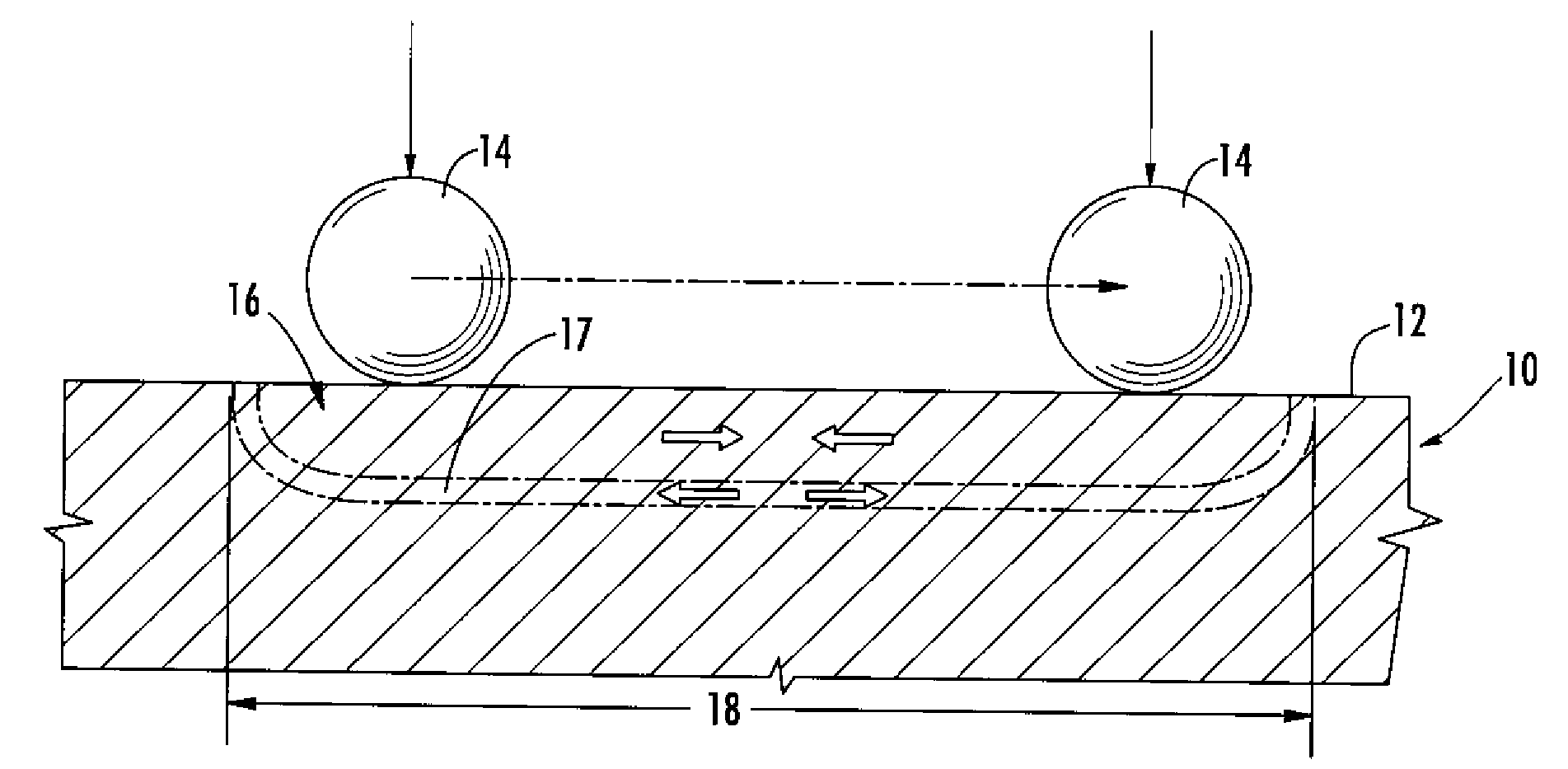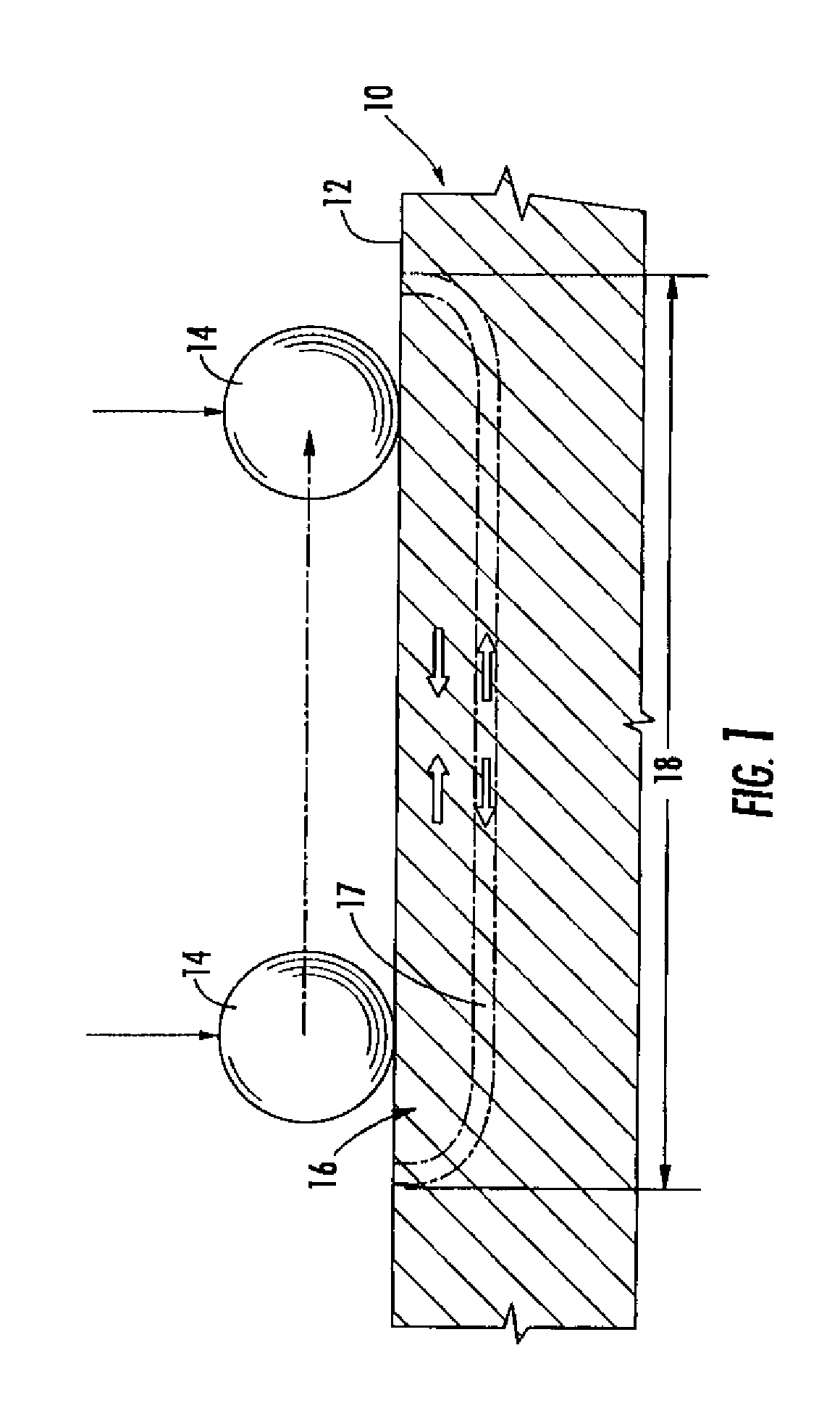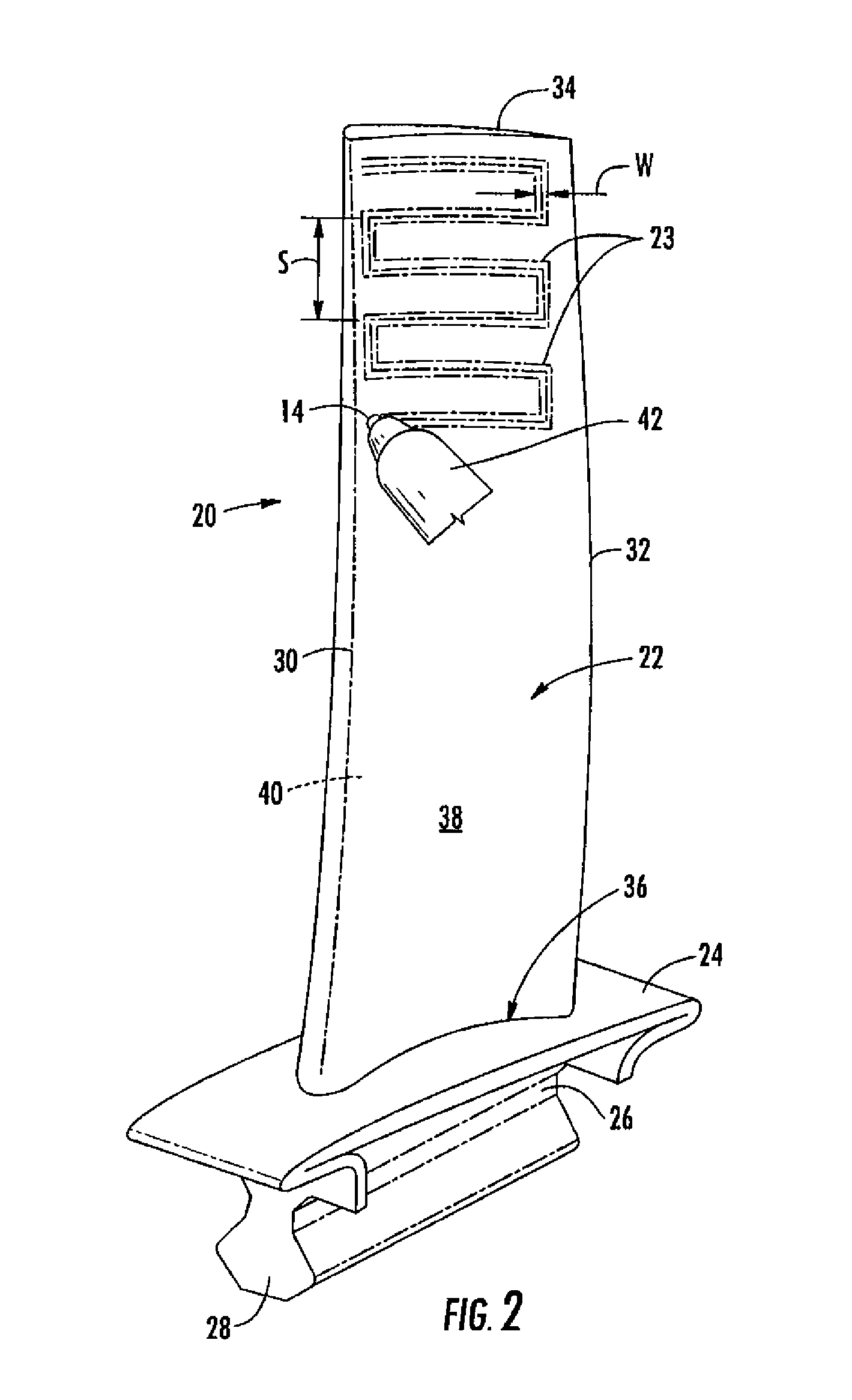Component of variable thickness having residual compressive stresses therein, and method therefor
a variable thickness, compressive stress technology, applied in the direction of manufacturing tools, machines/engines, forging/pressing/hammering apparatus, etc., can solve the problems of reducing the life of parts, repair or replacement, and composite components that are susceptible to fatigue and damage cracking, etc., to reduce crack propagation in components, and reduce the propagation of cracks in components
- Summary
- Abstract
- Description
- Claims
- Application Information
AI Technical Summary
Benefits of technology
Problems solved by technology
Method used
Image
Examples
Embodiment Construction
[0024]FIGS. 4A and 4B illustrate an exemplary burnishing treatment in accordance with an aspect of the invention being applied to the trailing edge region of an airfoil 122, which before treatment is identical to the airfoil 22 described above. FIG. 4A shows the treatment being applied to the pressure side 138 within a selected area by a burnishing element 114, while the airfoil 122 is supported by a block 144. The treatment described herein may be applied to any portion of the airfoil 122. In this case, the applied pressure in a direction normal to the surface, indicated at F, is selected to generate a region 146 of residual compressive stress which has a depth D (this could also be described as penetration) measured from the surface of the suction side 138, and expressed as expressed as a fraction of the total thickness of the airfoil 122 at the point of measurement. To achieve a more uniform depth D, the burnishing parameters are changed as the burnishing element 114 moves to are...
PUM
| Property | Measurement | Unit |
|---|---|---|
| residual compressive stress | aaaaa | aaaaa |
| thickness | aaaaa | aaaaa |
| compressive stress | aaaaa | aaaaa |
Abstract
Description
Claims
Application Information
 Login to View More
Login to View More - R&D
- Intellectual Property
- Life Sciences
- Materials
- Tech Scout
- Unparalleled Data Quality
- Higher Quality Content
- 60% Fewer Hallucinations
Browse by: Latest US Patents, China's latest patents, Technical Efficacy Thesaurus, Application Domain, Technology Topic, Popular Technical Reports.
© 2025 PatSnap. All rights reserved.Legal|Privacy policy|Modern Slavery Act Transparency Statement|Sitemap|About US| Contact US: help@patsnap.com



